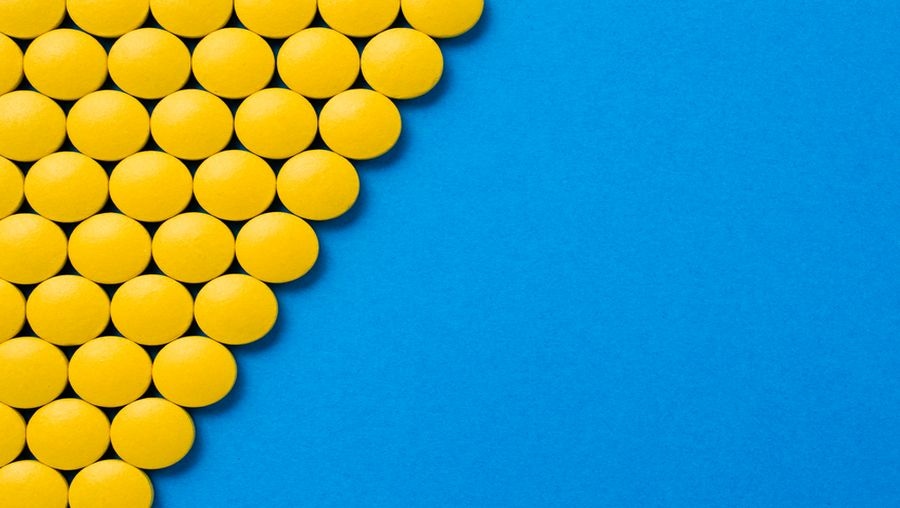Compressing Nutraceutical Tablets
Tablet compression equipment’s efficiency and cost of ownership can hamper the growth of the global nutraceutical market, but technological advancements are keeping up with market demands.
October 26, 2016

The demand for nutraceuticals and dietary supplements is growing steadily worldwide, and these numbers are expected to increase manifold in the years to come. A recent report by Transparency Market Research (TMR) reported the global nutraceutical market is expected to expand at a 7.3 percent compound annual growth rate (CAGR) from 2015 to 2021, reaching US$278.96 billion by then. Contributing to this phenomenal growth is increasing global awareness among consumers of the benefits of botanical ingredients. Gluten-free products are expected to further fuel the growth of this expanding market.
Technological advancements in machines are keeping up with the market as more of them are moving from manual to semi-automated, and then to high-speed automated machines to meet global demands. New applications are predicted as well to propel this growth in the next few years. Applications development, safety and efficiency, as well as rising prices of nutraceutical products in this segment, are some of the factors that could hamper growth of the global nutraceutical market.
Compression Process
Given that a large percentage of supplements are provided to consumers in tablet form, it is essential for manufacturers to look at ways to reduce factors that hamper growth of the market. Effective production and lower costs could go a long way in aiding growth of the market. An efficient way to do this is to focus on the two major root causes that can affect growth.
First, the equipment’s efficiency that can be correlated with its availability, which is the actual running time of the equipment vs. the planned running time, and performance efficiency, calculated as the product of rate efficiency and the speed efficiency. The quality rate is defined as the ratio between the defect-free output and actual production volume.
Second, the cost of ownership of any equipment includes all the expenses associated with owning and operating it over the life expectancy. The two main components are:
• Capital cost—This includes the initial price of purchasing and installing the equipment, including back-up and spare units.
• Recurring operating expenses—The ongoing cost of energy or fuel, planned maintenance, breakdown costs and equipment repairs over the machine’s useful life.
The sections of a tablet press that can be optimized to enhance operational and economic efficiency are:
Structure—The design structure of the tablet press is the key for higher availability by reducing cleaning time, enabled by quick accessibility of the production area and features such as automatic lubrication systems. Highest performance efficiencies compared with rated rpm (rotations per minute) come from a robust design and excellent manufacturing practices, resulting in the best performance and high speeds. High-quality rates result from increased dwell times as a result of incorporating a larger pitch circle diameter into the turret. Improved design structures for the tablet presses also offer significant potential for the reduction of the total cost based on lower capital investment costs, lower validation and investment costs along with lower consumable cost hence increasing the safety standards.
Feeder—The design, size and material of the feeder play a key role in determining the quality and productivity of the press. A feeder shoe that covers a larger number of dies enhances the content uniformity and increases the speed of the press. -Abrasive and corrosive powders are common to the nutraceutical industry, so feeders and other contact components that have higher strength can lead to efficient operations and cost control. They can also increase efficiency, both in operations as well as reducing costs by eliminating the need for repeated replacements. The quality rate can be improved by optimizing the uniform fill and improved flow capabilities, using an enhanced and unique three-paddle feeder design.
Turret—Optimizing the turret’s design increases availability from reduced changeover time, easy cleaning and swing out removal of the turret with tooling. The increased available time directly results in time available for more production. Carrying out the compression process at high speed owing to a robust turret with a large number of stations leads to an increase in productivity, too. Special coatings of the die table enable handling of abrasive formulations and enhance the life of the tablet press.
Pressure Rollers—Challenges in forming tablets of acceptable hardness are caused due to the elasticity and hygroscopic nature of the formulation mix. Even when such a tablet is created, it is prone to capping and lamination defects leading to poor productivity. One primary reason is the high compression force applied at the main compression station without sufficient tamping force provided at the pre-compression rollers. Manufacturers are constrained by smaller rollers, generally provided at the pre-compression station in the earlier tablet presses. However, modern day tablet presses overcome these constraints by providing equal-sized rollers at both stations.
Mohammad Nadir heads the marketing division at ACG Pam (acg-pam.com), a member company of ACG Worldwide (acg-world.com). For the past three years, his key area of interest has been tableting technologies that are being developed by ACG. He is also a part of the product development team that works for developing new technologies. He holds a master’s of science in operations from the T.A. Pai Management Institute, Manipal, India.
About the Author
You May Also Like